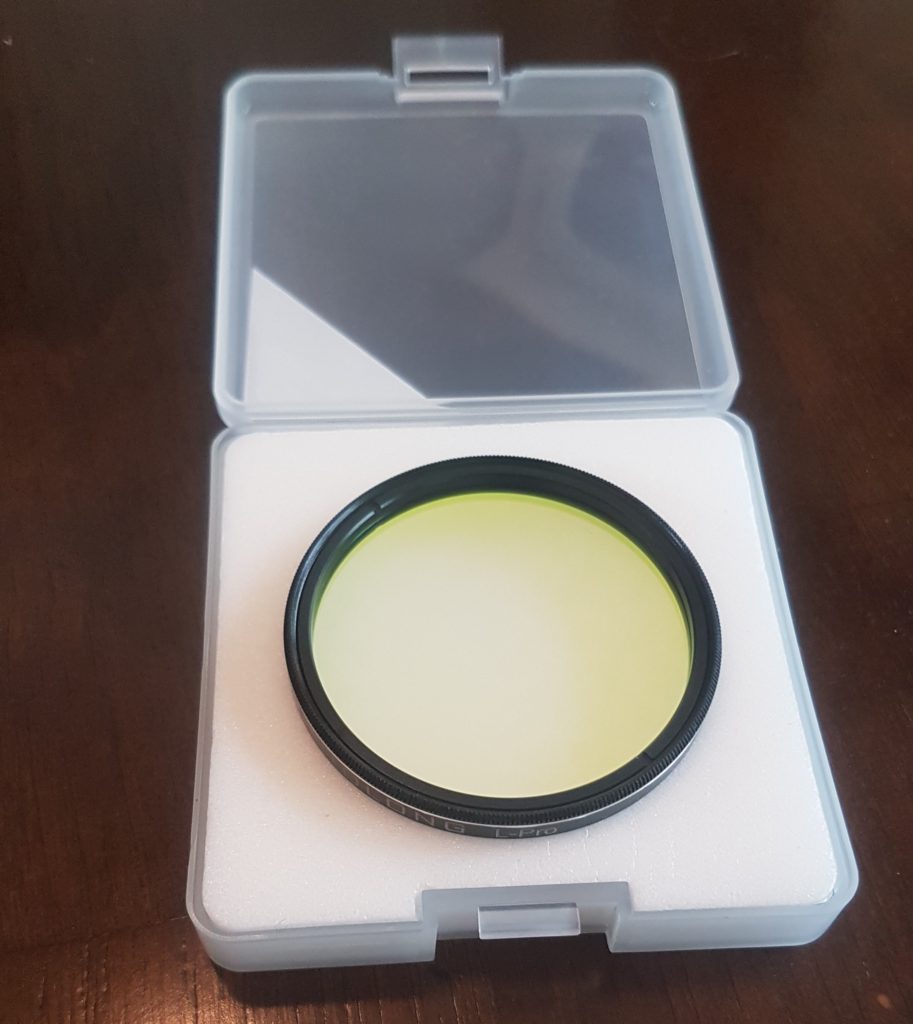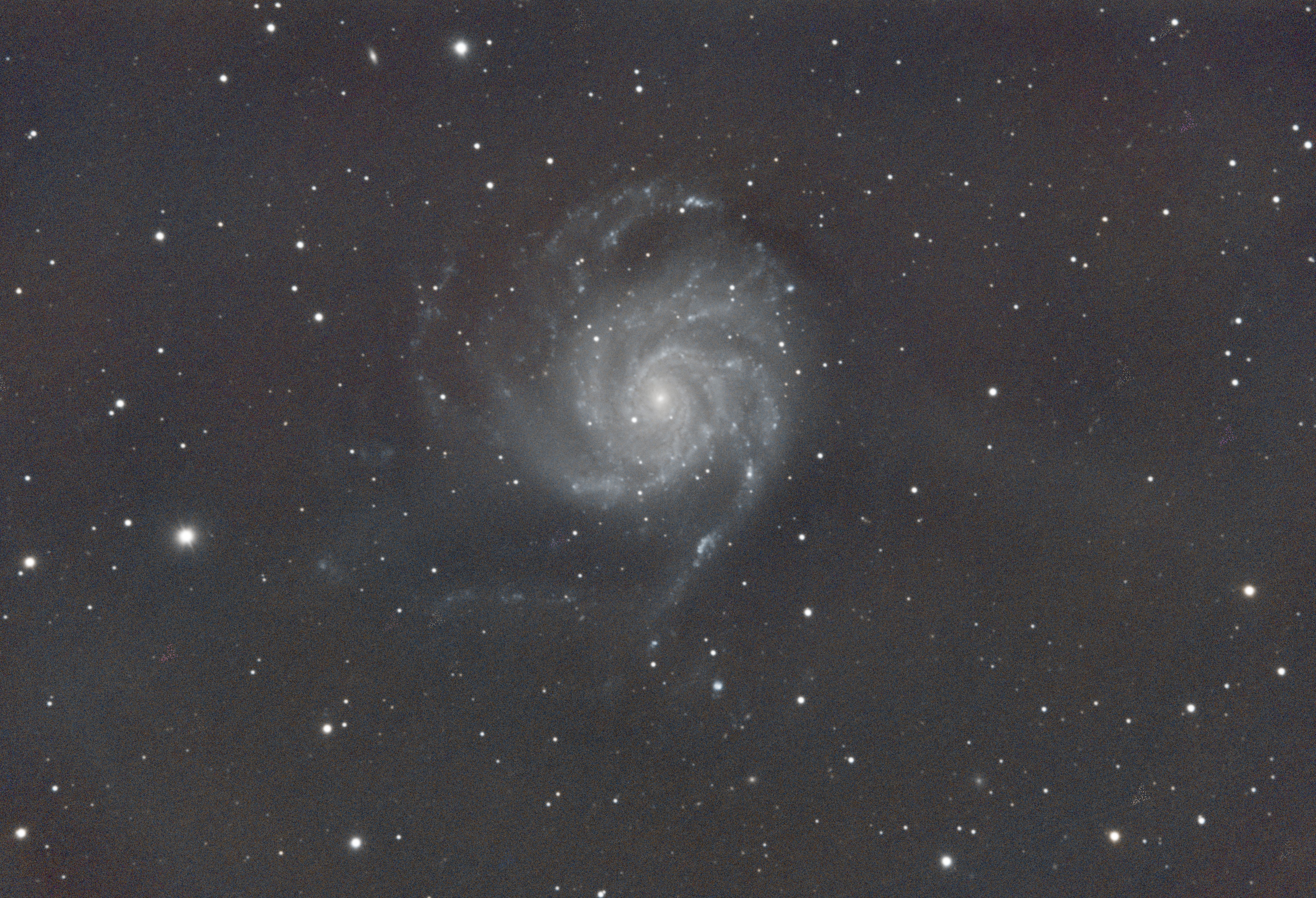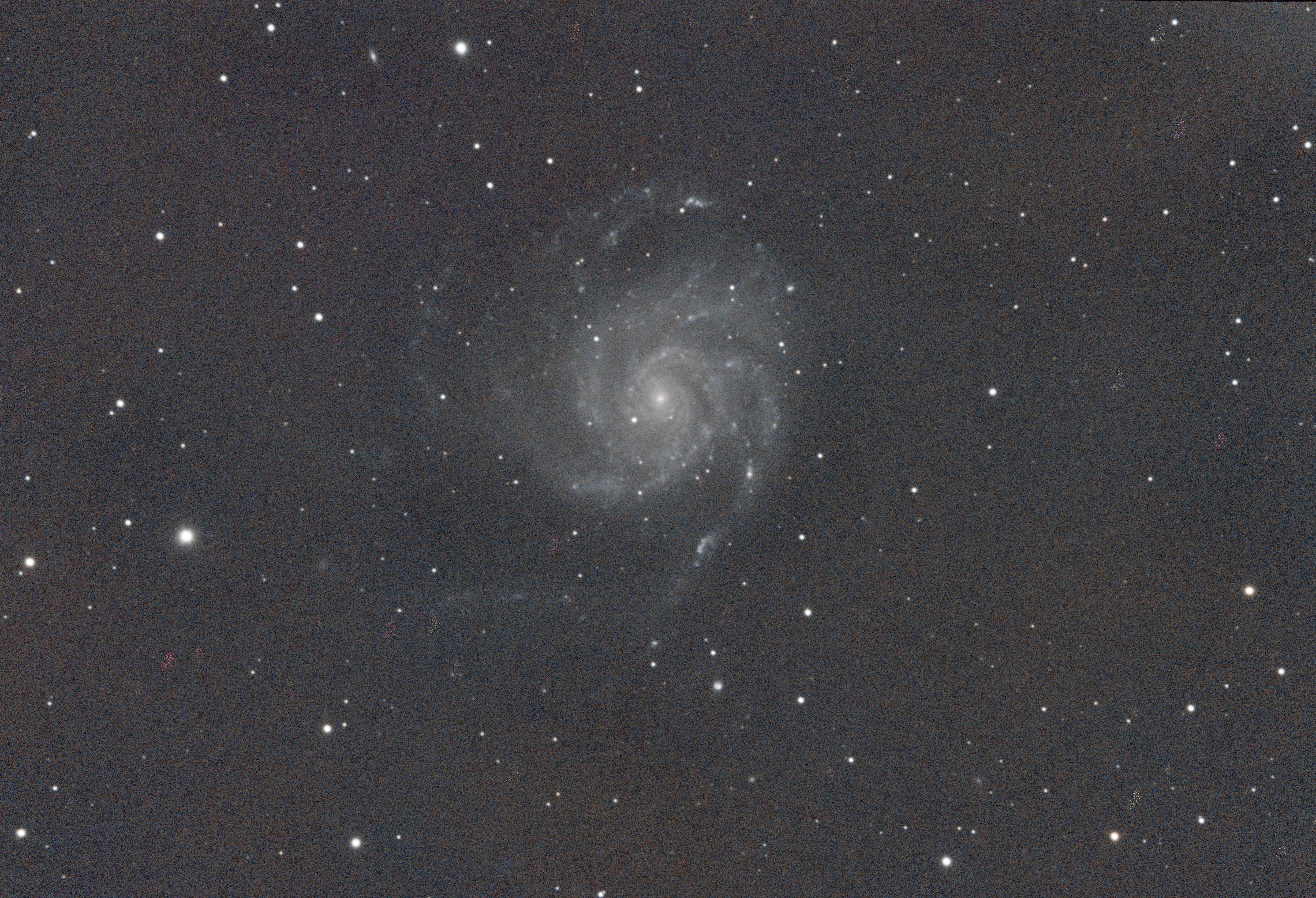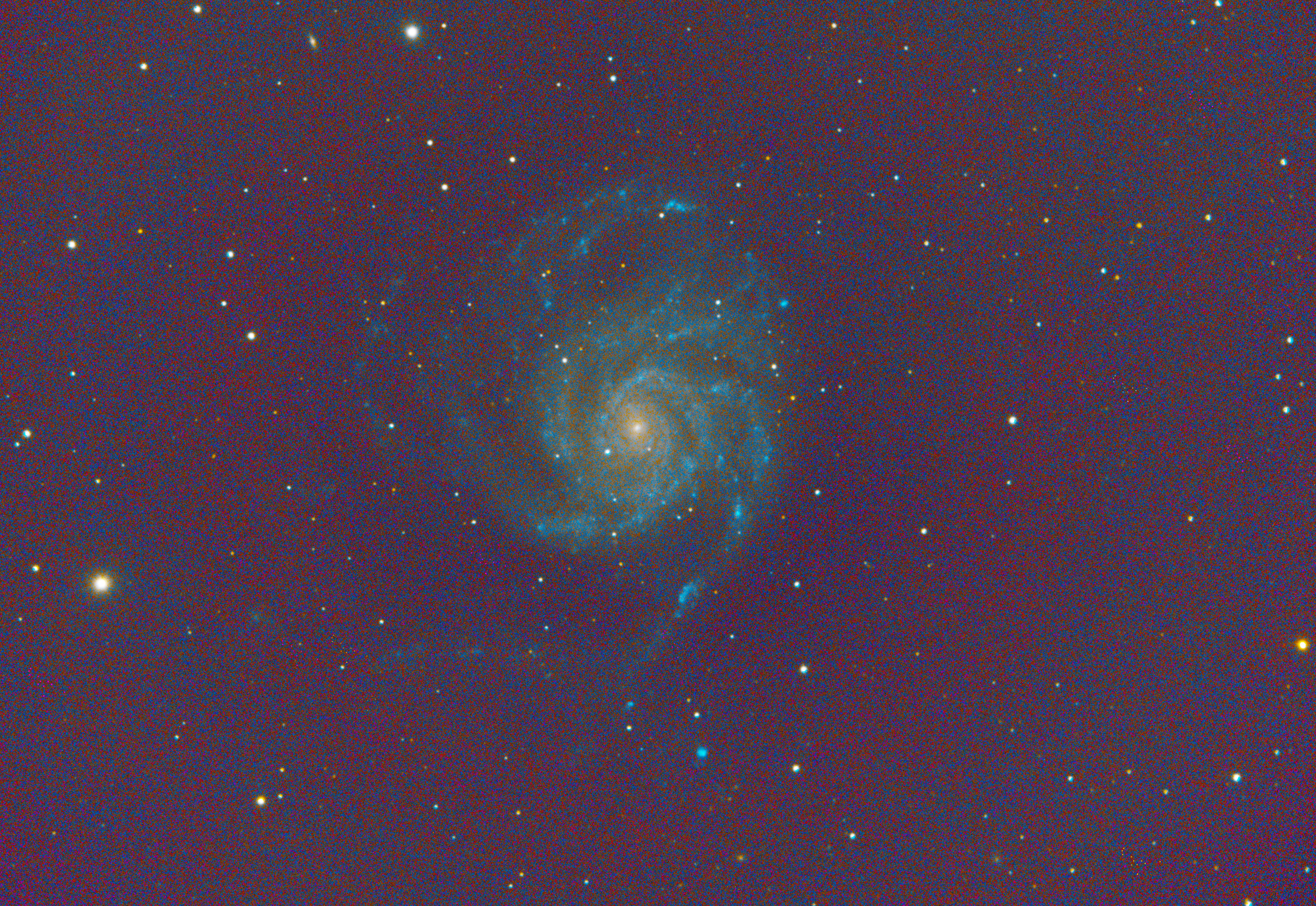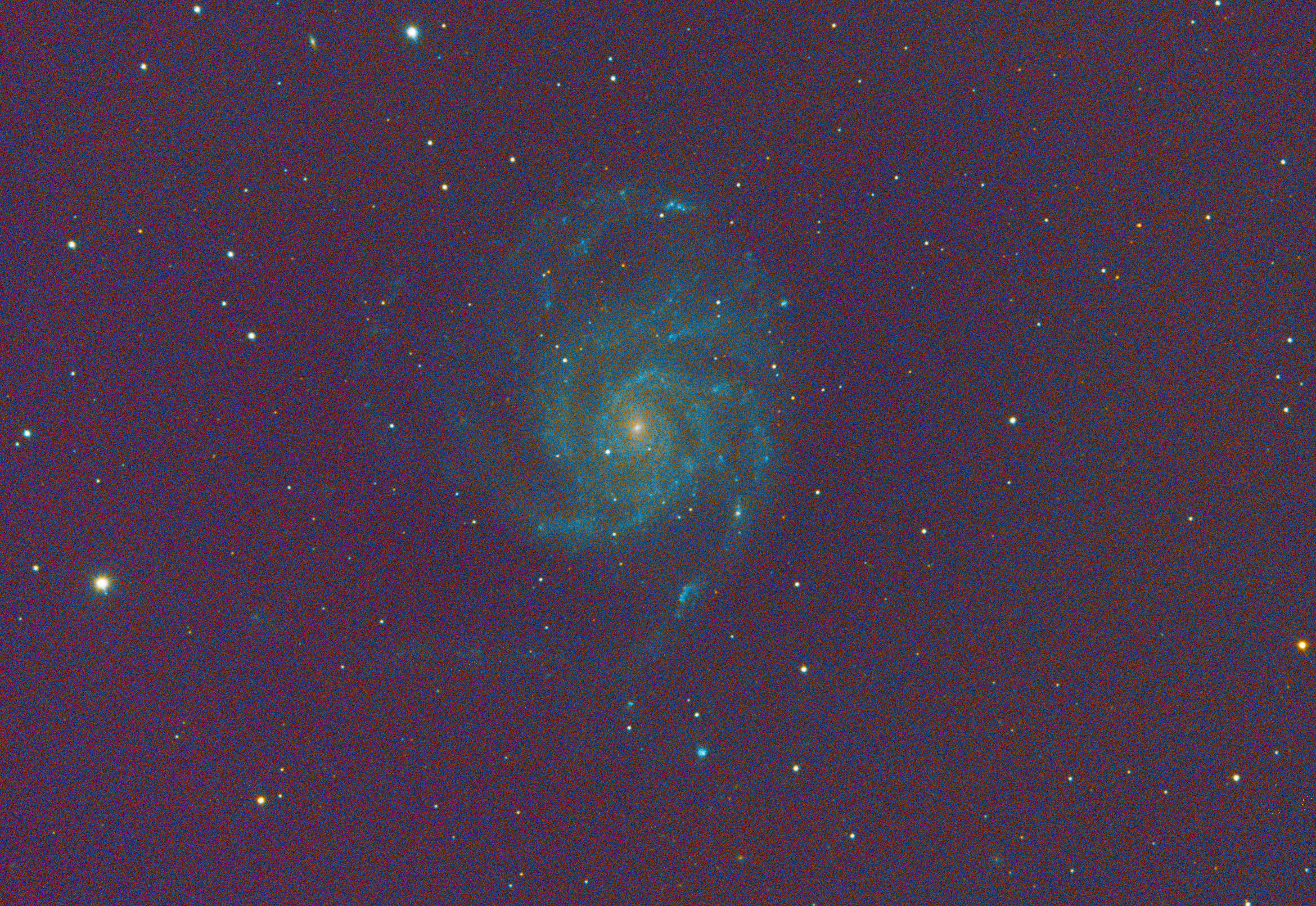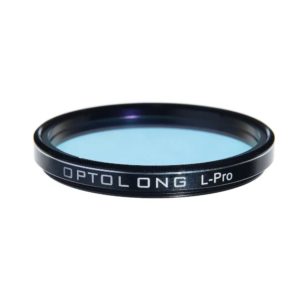
Table of Contents
The Optolong L-Pro Light pollution filter is a multi-bandpass filter optimized for various emission spectra in reflection nebulae and galaxies, and to remove multiple common artificial light sources as well (such as Mercury or Sodium vapor lamps). It comes in various form factors for individual camera use, or telescope use, including a 2″ and 1.25″ form factor. It contains screw-on threading for these form factors and includes a case and a brief information page.
Specs
The price when I acquired the 2″ form factor is right around $200, which is somewhat expensive for a filter but not terribly unreasonable for one of this functionality.
This form factor contains standard 48mm filter threading (I believe it’s “M48”, but I’m not certain) that was prepared to attach to the front of my Starizona SCT reducer/corrector which subsequently slides into the visual backing like usual. Do keep in mind that this has the potential to set your entire optical train backwards a few (3-5) millimeters if the object to which you’re attaching it normally slides all the way flush with the tube ahead of it, since now the filter is the part touching that tube surface. This may not be the case in all setups, however. There are additional form factors including for 1.25″ optical trains, and a couple made for the inside of DSLRs as well, however I only used the 2″ form factor in this review.
The filter is designed to eliminate various wavelengths emitted by artificial light, while preserving some of the most important bands from certain nebulae and galaxies, as shown in their emission spectrum diagram:

In this graph, the red curve is the transmission spectrum representing the percentage of light that passes through as a function of wavelength in nanometers. The orange bars represent wavelength peaks of various artificial light sources, whereas the green bars are common emission spectra of the DSOs, such as of H-alpha, H-beta, and OIII. It removes many lines from Hg and Na light sources (mostly greens and yellows), leaving a slightly blue cast to the transmitted image.
Again, because it attached to the front of the focal reducer, it increases the backfocus distance of the entire optical train behind it by something like 5mm, as the focal reducer doesn’t slide in as far to contact the tube on its front. This may not happen on all setups, however, if the filter fits internally within a wider optical train.
Strengths and Weaknesses
This is a really decent filter for its specific purposes. Here are some of the strengths and weaknesses:
Pros:
- Nice quality glass
- Large form factor for the 2″ one
- Includes case
- Great reduction in red and green light (including sky glow) and preservation of many galactic details
- Huge improvement in gradients in the resulting image, an unexpected benefit!
Cons:
- Possible increase in backfocus distance in some setups
- Introduction of a bluer color cast which should be dealt with in post processing, although not huge!
- Some undesired attenuation of the galaxy signal, especially the yellows and reds
- What I believe to be a reduction in contrast when using it, which is the opposite effect I was hoping for
Performance
As mentioned above, this filter does a great job of preventing some of the ambient, undesired light from reaching the imaging sensor. I actually first noticed the difference that this filter provides after a stack of some of the initial data, which showed a drastic reduction in the amount of gradients I had to remove from the stack. This wasn’t a result I was expecting or looking out for, however it was a nice thing to see because I’m always wrestling with aggressive gradients in this setup, to the point of making the results unusable, and will be further troubleshooting things to help this. This was an encouraging start, then.
In addition to removing these gradients, there was an expected reduction in certain light-pollution frequencies, however at a cost of attenuating some desired target signal around these wavelengths too.
Gradient Reduction
A reduction in the gradients in the image was clearly noticeable when using this filter, as can be shown on the comparison slider below. Each image contains 4.75 hours of data integrated with the same settings, followed by green SCNR, background neutralization, dynamic background extraction, and photometric color calibration all in PixInsight. They are then auto-stretched while still linear to compare:
It is clear that there are fewer gradients, and a flatter field, with the filter. Note that flat calibration frames were taken separately for each dataset, as is necessary.
There are only two main possible reasons for this, those being reduction in light pollution both 1) inside and 2) outside the field of view. Because of the high focal length at which I’m imaging (~1500mm), I don’t believe the first possibility explains the difference here, as light pollution gradients from the sky shouldn’t have any appreciable variance across this small FOV. So it seems that light pollution from outside the field of view (likely causing gradients due to diffuse internal reflections) has been attenuated substantially. This was an unexpected consequence of using this filter, and overall a positive one!
Target Performance
The filter certainly cuts out many of the undesired wavelengths, however at the price of attenuating some of the desired signal, as demonstrated below. These datasets contain an hour of data each, with the standard linear processes applied, and then were saturation boosted to show how the color data holds up.
Although still good, the data with the filter in place is missing certain bands that are critical to the core of the galaxy (particularly in the reds, oranges and yellows). This results in the expected blue color casting, and although not surprising, I personally don’t want to attenuate the signal data this harshly. It is hard enough to obtain correct colors with DSLR work on this scope, and I actually don’t see a strong increase in the SNR here; although much of the light pollution has been removed, the contrast actually seems slightly worse. Perhaps this could be compensated with more data while using the filter, which is also expected, however the loss in desired signal in certain bands is not acceptable for my standards.
Final Words
Therefore overall I would say this filter does a very good job at its purpose and would be a very competitive choice for working in light polluted environments in which the target is a nebula (particularly reflection type) or galaxy. However, due to the lack of strong contrast increase, coupled with the attenuation of non-blue signal bands, I chose not to keep this filter; as a perfectionist, I can’t have any piece of equipment attenuating my signal or changing the color balance. Instead, I’ll be working hard to remove these gradients at their sources (which is proving to be the hardest challenge I’ve ever faced) and work without any light pollution filters. Gradients can be dealt with in post processing if they’re even and uniform, and integrating enough data will handle the light pollution well for this advanced work.
For many people though, this filter offers a great balance between signal preservation and light pollution reduction that may suit their needs comfortably. It is clear that this filter works as advertised and at a high level of performance. It is worth noting that I do not have any strong light pollution sources near my imaging setup due to abundant trees and shielding, so I’m mostly wrestling with ambient light pollution from the nearby city. Blocking nearby light sources is probably a more appropriate use-case for this filter anyways, so people buying it for that purpose will likely find better improvement as well.
